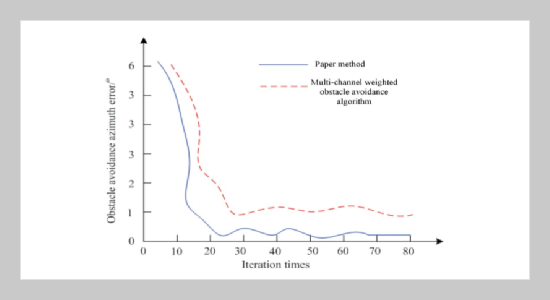Wenlian Guo1 and Yuchi Zhang This email address is being protected from spambots. You need JavaScript enabled to view it.1 1Tianjin Transportation Vocational College, Tianjin 300110, P.R. China
Received:
February 15, 2017
Accepted:
October 14, 2017
Publication Date:
December 1, 2017
Download Citation:
||https://doi.org/10.6180/jase.2017.20.4.14
The visual obstacle control of underwater autonomous vehicle is a key technology to improve the survivability of underwater autonomous vehicle. In view of bad convergence and big error problem of multi-channel weighted obstacle avoidance algorithm, an underwater autonomous vehicle visual obstacle control method based on dynamic feedback tracking fusion is proposed. The longitudinal motion model of the underwater autonomous vehicle is constructed. Self-adaptive back-stepping integral control law is constructed with the angle of pitch and roll phase position as constraining parameters. The dynamic feedback tracking and fusion method is used to realize the path planning of underwater autonomous vehicle, and parameters self-tuning qualitative process is carried out for angular correction and visual obstacle avoidance control design of autonomous vehicle underwater. The simulation results show that the proposed method has good adaptability and can eliminate angle and azimuth error of obstacle avoidance control and the control precision is good.ABSTRACT
Keywords:
Underwater Autonomous Vehicle, Obstacle Avoidance, Control, Path Planning
REFERENCES
















